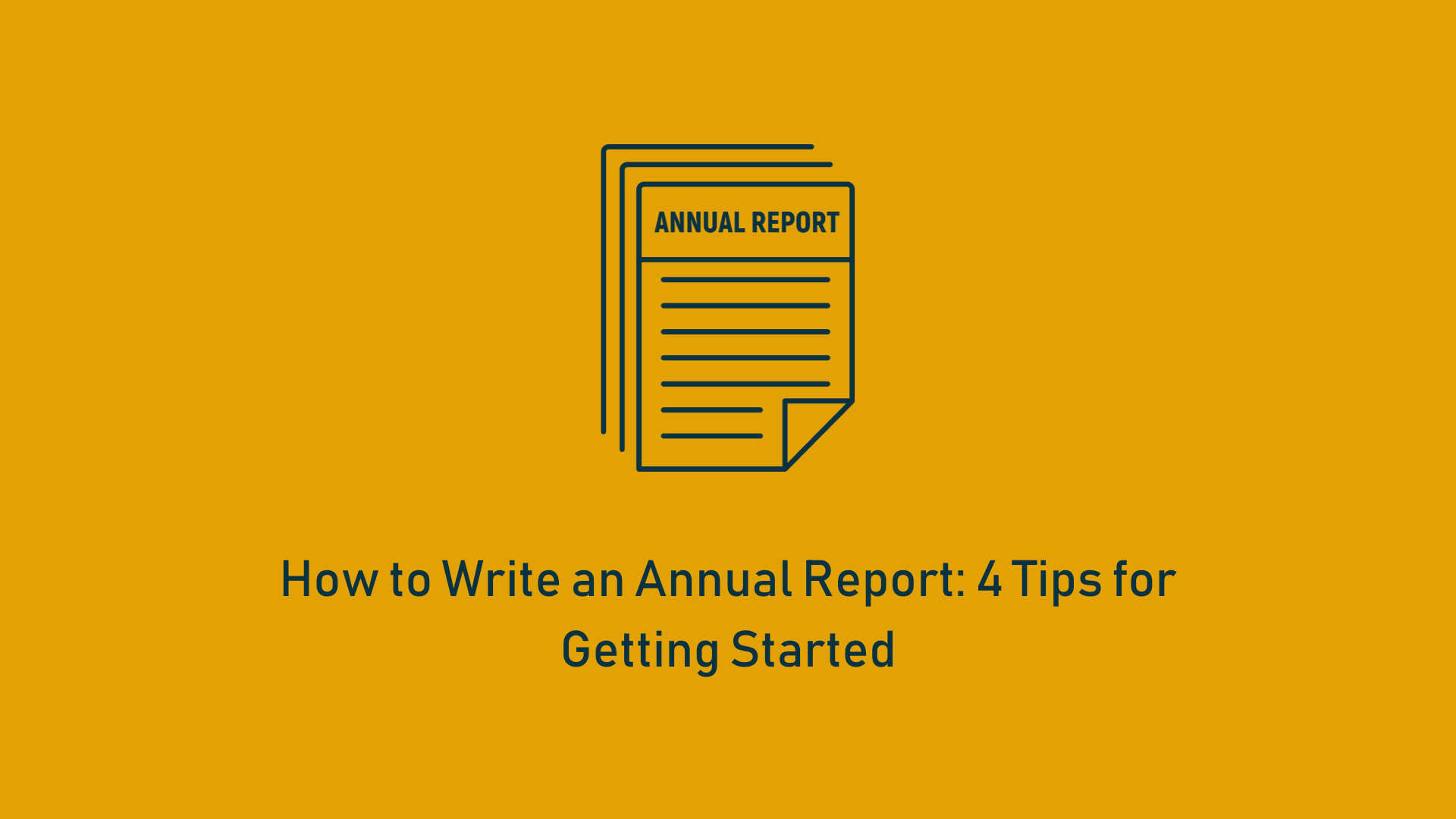Building relationships with shareholders, investors, and the broader public is essential for the expansion of your small business. The annual report serves as a vital tool in demonstrating your business’s robustness, thereby reassuring existing shareholders about your business’s operations. Additionally, this report is an opportunity to attract new investors and clients by highlighting your company’s management, financial health, mission, and objectives.
Mastering the art of crafting compelling annual reports is crucial not only for fulfilling end-of-year documentation requirements but also for establishing personal bonds. Delve into the key elements of an effective annual report and learn tactics to infuse creativity, distinguishing your business in the market.
Key Takeaways
- Presents business activities to stakeholders and the public.
- Includes mission objectives, financial status, organizational framework, and strategic plans.
- Legal requirement for issuing an annual report varies with business size.
- Serves as an effective marketing tool when well-constructed.
- Should aim for transparency, truthfulness, and engagement.
- Understanding the Annual Report: An overview of what an annual report is.
- Contents of an Annual Report: Details on what elements should be included.
- Crafting a Compelling Annual Report: Guidelines on how to write an effective annual report.
- The Significance of an Annual Report: Exploring why an annual report is crucial for a business.
- Wrapping Up: A concluding summary of the main points.
- Answers to Common Queries: Addressing frequently asked questions related to annual reports.
What Is an Annual Report?
To craft an annual report, one must document, summarize, and record both the operational activities and financial status of the business. This report serves as a key financial document made available to shareholders, prospective investors, and financial analysts, offering the most comprehensive insight into the company’s operational performance and fiscal health.
Companies that are publicly traded are mandated to submit their annual reports to the Securities and Exchange Commission. Yet, this practice isn’t exclusive to large corporations. Small businesses and non-profit entities also compile annual reports. These reports are vital for engaging with customers and stakeholders, providing a transparent view of the year’s operations, past achievements, and forward-looking objectives.
What to Include In an Annual Report?
The annual report is a crucial component of corporate reporting, tailored according to specific legal mandates, which results in variation in the contents included.
Generally, annual reports offer a basic review of the business’s activities over the previous year. Common sections found in these reports include a foreword from the chairman, a profile of the business, a managerial analysis, and key financial data.
Chairman’s Letter
Annual reports typically begin with an introductory segment and a letter from the company’s chairman, main proprietor, or CEO to the shareholders. This letter offers an overview of the major developments during the previous financial year, highlights company initiatives, and provides a concise summary of the financial situation. In this section, emphasis is placed on outlining the challenges the business encountered, its notable achievements, and insights into the company’s growth trajectory.
Following this introductory part, the report includes a table of contents for easy navigation.
Business Profile
This particular section of the annual report encapsulates several key elements:
- The vision and mission statement of the company, reflecting its core values and long-term objectives.
- Detailed information about the company’s directors, officers, and the locations of its registered and corporate offices.
- A profile of the investors, outlining the demographics and characteristics of the company’s shareholder base.
- Descriptions of the primary products or services that constitute the main revenue streams for the business.
- An overview of the competitive landscape, including a profile of major competitors.
- An assessment of the risk factors associated with the business, highlighting potential challenges and uncertainties.
Management Discussion and Analysis
This segment of the report offers a comprehensive review of the business’s performance over the last three years, focusing on key financial metrics such as profit margins, sales, and income.
In cases where the business has introduced new products or services, or if there have been significant changes in sales and marketing strategies, these developments should be prominently featured in this section. Additionally, this part of the report should cover other significant occurrences, such as new team additions, business acquisitions, and any other information deemed relevant and beneficial to stakeholders by the management.
Financial Statements
The financial statements constitute the most crucial aspect of the annual report, enabling current and prospective investors, shareholders, employees, and other stakeholders to evaluate the company’s past performance, debt repayment capacity, cash flow, and growth plans. The key statements included are:
- Balance Sheet: This statement provides a snapshot of the company’s financial position at a specific point in time, detailing assets, liabilities, and shareholders’ equity.
- Cash Flow Statement: This outlines the inflows and outflows of cash, offering insight into the company’s liquidity and financial health.
- Income Statement: Also known as a profit and loss statement, it shows the company’s revenue, expenses, and profits or losses over a period.
- Statement to Shareholders: This gives an overview of the company’s financial status directly to its shareholders.
These statements are essential for understanding whether the company realized a profit or a loss in the past year, the amount of earnings it has retained, and the ratio of revenues to operational expenses from the previous year. Additionally, the annual report should include information about the market price of the company’s shares and the dividends distributed.
For those seeking a more streamlined approach to managing their accounts, tools like FreshBooks’ bookkeeping software can be invaluable. They offer user-friendly filing methods and expert support, simplifying the bookkeeping process. For more information or to start using this tool, interested parties can click here.
Other elements included in the year-end report are:
- Notes to accounts with details about the accounting policies
- Comments by auditors on the financials of the company.
- Disclaimers about forecasted income and expenses
- Stories, infographics, and photographs
How Do You Write a Good Annual Report?
Annual reports play a crucial role in showcasing a brand’s openness and responsibility. Instead of composing dense, complex documents accessible to only a few, businesses are now crafting annual reports that resonate with a wider audience.
Such reports effectively convey the core values and objectives inherent in the company’s mission and brand identity. By developing annual reports that are rich in visuals and narrative, and potentially interactive, companies can enhance their connection with shareholders, investors, and customers. It’s advisable to integrate visual components throughout the report to maintain reader engagement.
Determine the Key Message
Annual reports present an ideal chance to showcase your achievements and their significance. Investors and employees are keen to understand not just what actions were taken, but also the reasons behind them. Linking your business activities and successes to your ultimate objectives and mission statement allows businesses to cultivate trust and establish enduring relationships.
Finalize Structure and Content
Determining the content and structure is one of the more challenging aspects of crafting an annual report. It’s crucial to strategically plan the report’s layout and contents.
Beyond the fundamental sections like the introduction, chairman’s message, company overview, and financial statements, the report should follow a cohesive storyline. This narrative approach helps in structuring the report and makes it simpler to identify and eliminate content that doesn’t contribute to the narrative’s progression.
Employ writing that is clear, concise, and straightforward. It’s important to keep a professional and neutral tone throughout the report. The information presented should be forthright and genuine, without overstating successes or downplaying setbacks.
Simplify the process of writing your annual report by maintaining precise and comprehensive records throughout the year. FreshBooks’ accounting templates assist in neatly organizing your expenditures, earnings, and receipts, ensuring you have all necessary information prepared for year-end. Start your free trial by clicking here and discover how FreshBooks can streamline your accounting tasks.
Use Compelling Design
A skillfully crafted, appealing, and professional report can serve as an effective marketing asset for a business. The report should be designed so that readers can quickly skim it and extract the necessary information. To achieve a standout annual report design, consider these tips:
- Implement clear headings and subheadings.
- Allocate ample space for engaging visuals like photographs, infographics, and other striking graphic elements.
- Maintain brevity and simplicity in the text.
- Opt for a bold and harmonious color palette and layout strategies that align with your brand’s identity.
- Highlight crucial sections using colored text boxes, notable quotes, and descriptive captions.
Plan in Advance
The development of an annual report is an extensive process that necessitates a structured approach for documenting and monitoring various elements like data, media clippings, photographs, and a record of business accomplishments. While some companies opt to produce their annual reports internally, others prefer to engage a design agency for compiling, proofreading, and completing the report.
Interested in crafting a coherent and engaging digital annual report? FreshBooks offers a reports feature that provides access to report templates, performance analytics, and detailed accounting information, enabling you to efficiently produce your reports in-house. Start with a free trial to commence the creation of your annual report today.
Click here for more information and to start your free trial with FreshBooks.
Why Is an Annual Report Important?
Annual reports are utilized by both public and private firms to disseminate essential business and financial data to customers, investors, employees, and the media. Writing annual reports is crucial for businesses for several reasons:
- They offer a platform to showcase the company’s major accomplishments, future projections, and overall goals and objectives.
- These reports provide insights into the company’s financial health.
- They serve as an introduction of the key business leaders to stakeholders and the broader public.
- The reports communicate to shareholders and employees the company’s strategy for growth in the upcoming year.
- They are valuable tools for managerial decision-making.
Keeping annual reports current is vital for maintaining critical business information. For public companies, failing to update investors and regulatory bodies can lead to penalties or even the dissolution of the company.
Conclusion
Creating an annual report is vital for conveying your business’s status to shareholders, investors, and the general public. Additionally, for certain company sizes, there’s a legal obligation to submit these reports to the Securities and Exchange Commission.
An effective annual report should encompass four primary elements: a letter from the chairman, a detailed business profile, an evaluation of management strategies, and the financial statements. Incorporating creative aspects such as graphic design and storytelling can enhance the report’s utility as a marketing instrument. Developing the skill to produce a compelling annual report is crucial for informing management choices within your company and for engaging with those who contribute to its growth and success.
FAQs on How to Write an Annual Report
How do you Write an Annual Report for a Small Business?
Crafting an annual report for a small business involves a process akin to that for larger corporations, entailing key components such as a chairman’s letter, a business profile, an analysis of management, and financial statements. However, the scale of a smaller business affords greater creative liberty. This flexibility allows you to customize the report to suit shareholder needs or to transform it into a document aimed at the public, effectively using it as a tool to market your small business.
Who Prepares the Annual Report?
Companies often opt for one of two approaches when preparing their annual reports: employing their internal writing and design team or outsourcing the task to an external firm. These teams typically comprise professionals specializing in accounting, writing, and graphic design, each contributing their expertise to the creation of the report.
Which Things Should be Avoided while Writing a Report?
It’s important not to procrastinate on your annual report, attempt to conceal any difficulties your business has encountered, or overwhelm the document with excessive details and technical jargon. The objective should be clarity in your communication – being honest about your company’s achievements and setbacks, and using language that is easily comprehensible to all your readers.
What are the 5 Basic Structures of a Report?
An effective report can be organized into a straightforward five-section format to effectively present your company’s performance. The sections include:
- Introduction: Begin with a concise overview.
- Body: Provide detailed information here.
- Comments and Disclaimers: Use this section to clarify any claims or facts.
- Conclusion: Summarize the information gathered.
- References: Cite any external sources used.
Start with a brief introductory summary, then delve into the main content in the body. The comments and disclaimers section should address specifics and nuances of the information, followed by a summarization in the conclusion, and finally, list any external references.
What are the 4 components of an annual report?
When composing an annual report, there are four essential components to include:
- Chairman’s Letter: This is a personal message from the chairman, often setting the tone for the report.
- Business Profile: A detailed overview of the company’s operations and market presence.
- Management Analysis: An evaluation and commentary on the company’s performance, strategies, and future outlook by the management.
- Financial Statements: Comprehensive data showing the company’s financial health, including income statements, balance sheets, and cash flow statements.
Additionally, integrating creative elements such as narratives, infographics, and photographs can enhance the visual appeal of the report, making it more engaging for the intended audience.







